To my surprise, my friend defended khatna

By Anonymous Having decided to pursue law at the age of 15 years old, I was excited yet unprepared to know about the society that we live in. For the past four years, I have gathered enough evidence through lectures, presentations, and discussions over coffee about the horrors of which any society is capable. One such day one of my professors decided to speak about female genital mutilation/cutting (FGM/C) and asked two of my peers to give a presentation on it. The projector was switched on, lights were switched off, and my two peers took center stage to introduce the class to the topic. At the end of the presentation in a class where several hands routinely raise eager to question presenters, there was pin-drop silence. The professor smiled at the horrid, silent expressions of my classmates and broke the silence to facilitate a discussion. Gradually, all of us formed a consensus that FGM/C is harmful and needs to stop. After class, I went home and started researching the practice and ended up watching a documentary, The Cut: Exploring FGM by an Al Jazeera correspondent. I read various articles where I learned FGM/C was practiced widely among the Dawoodi Bohra community in India, and this practice was known as khatna. My heart sank as I realized that a very close friend by the virtue of being from the community must have undergone FGM/C. As a concerned friend, but with pre-conceived notions and as a judgmental being, I went on to tell my friend that I would always be there to support her through the injustice inflicted upon her. To my surprise, (but should have seen it coming) my friend defended it, stating the various reasons that she had been fed through the years of why it was important for girls to undergo it in the Bohra community. I was shattered. However, I tried not to force my opinions about the practice on her. While speaking to a few more (girls and boys) I concluded that the reason behind the practice not being spoken about is because it mainly revolves around female sexuality and religion. The reason that men/boys in the Bohra community did not talk about it or oppose it was that they thought it’s a girl’s issue; whereas the girls who went through it might have felt the need to defend it. And to speak of it publicly, would mean that they would be betraying their religion, especially if they talk about it to an outsider, a Jain like myself. Gradually, I started reading stories about FGM/C through initiatives by organizations such as Sahiyo. Fortunately, it made me realize that as an outsider to the community, it is easy for me to be outraged and criticize any practice which is detrimental to the well-being of girls and women. However, when one grows up with the practice being justified, it takes a lot more than common sense to defy and disobey the practice that has been ingrained in the community for generations Now my friend has condemned the practice and shared her plight due to khatna, which is when I decided to write my dissertation on harmful practices like FGM/C, where women need to be uplifted without antagonizing the communities which uphold these practices.
Massachusetts Senate passes FGM/C bill
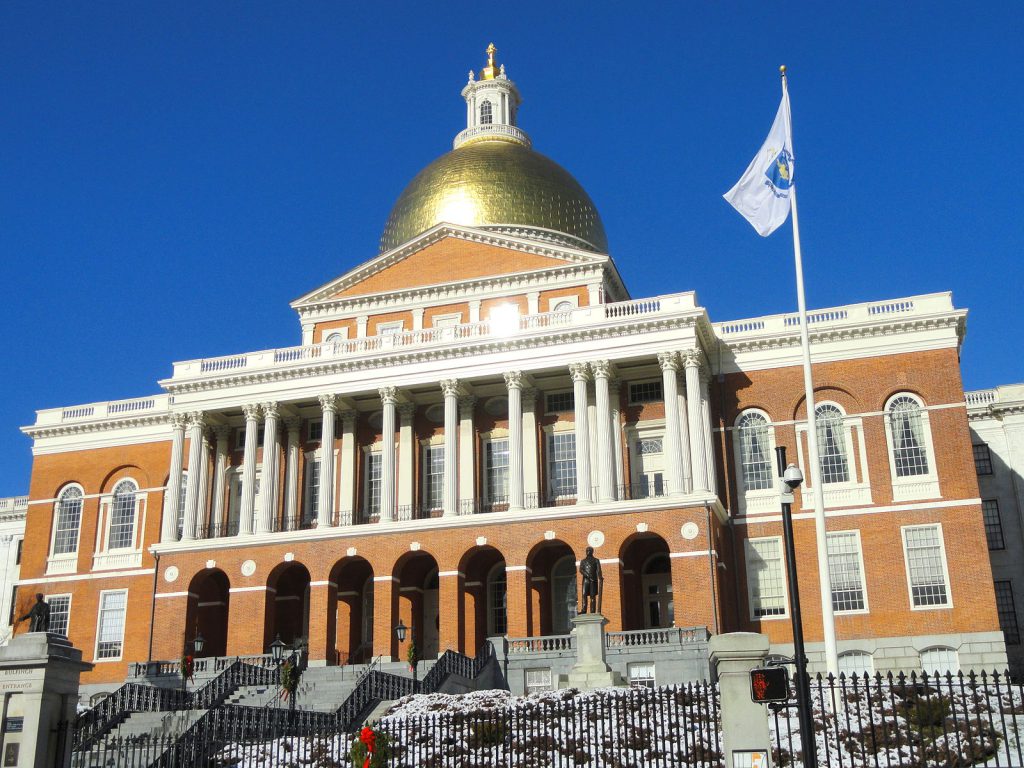
BOSTON, MA – July 30, 2020 – Sahiyo would like to thank the President of the Massachusetts Senate, Karen Spilka, and bill sponsor Senator Joe Boncore (D-First Suffolk and Middlesex) for the passage of bill H4606 “An Act Relative to the Penalties for the crime of Female Genital Mutilation/Cutting (FGM/C)” in Massachusetts. The FGM/C bill had a favorable vote in a formal session of the Senate, after it passed in the House on July 16th. Governor Charlie Baker will have 10 days to sign the bill. Survivors Mariya Taher, an Anonymous survivor, and activist Hanna Stern created a change.org petition to plead with the Massachusetts state legislature to protect young girls in Massachusetts from being cut by making FGM/C illegal. Taher, in particular, was praised by Senator Boncore for her work and advocacy on the issue. Taher has worked with the Women’s Bar Association of Massachusetts independently, and on behalf of Sahiyo – United Against Female Genital Cutting, of which she is the U.S. Executive Director and co-founder. Senator Boncore also recognized Sahiyo for their work on advocating for the abandonment of FGM/C. A member of the legislative working group, Joanne Golden, is also a member of the U.S. Advisory Board for Sahiyo. On June 16th, the Massachusetts House of Representatives voted favorably to pass the bill. The FGM/C bill not only has bipartisan support, but also bicameral support, with over 100 Senate and House cosigners of the original bills (H3332, H1466). The bill has also been supported by almost 50 organizations, including The Women’s Bar Association of Massachusetts, the AHA Foundation, UNICEF USA, the U.S. End FGM/C Network, Boston Mayor’s Office of Women’s Advancement, Office of the Child Advocate, Caucus of Women Legislators, American Academy of Pediatrics – Massachusetts Chapter, and American Congress of Obstetricians and Gynecologists (ACOG) – Massachusetts section, and Sahiyo, to name only a few. FGM/C is defined by the World Health Organization as removal of all or part of a girl’s healthy genitals and surrounding tissue for non-medical reasons, often resulting in serious health consequences, including the risk of death in childbirth, and lifelong trauma. There are no health benefits to this practice. According to the Centers for Disease Control, half a million women and girls living in the U.S. have been cut or are at risk of FGM/C. Over fourteen thousand such women and girls reside in Massachusetts, which ranks as 12th in the nation for at-risk populations. Last session, the Joint Judiciary Committee heard unequivocal testimony from survivors that FGM/C happens in the U.S., and that girls born in Massachusetts are at risk. Thirty-eight states have already passed laws banning FGM/C, including during the shutdown for the COVID-19 pandemic, and we respectfully urge Governor Baker to sign bill H4606 into law so that Massachusetts can become number 39. In November 2019, a U.S. District court struck down the federal law making FGM/C illegal, finding that Congress exceeded its authority under the U.S. constitution, and that FGM/C is a violent crime that must be regulated by the states. Top Massachusetts law enforcement officials testified last September that existing state criminal laws would not cover FGM/C. The Department of Children and Families considers FGM/C a form of child abuse. Massachusetts must act to stop this practice. Thank you to Senate President Spilka and House Speaker DeLeo, and our House and Senate bill sponsors for your leadership, support, and action on such an important issue of women and girl child rights.
Massachusetts House passes FGM/C bill
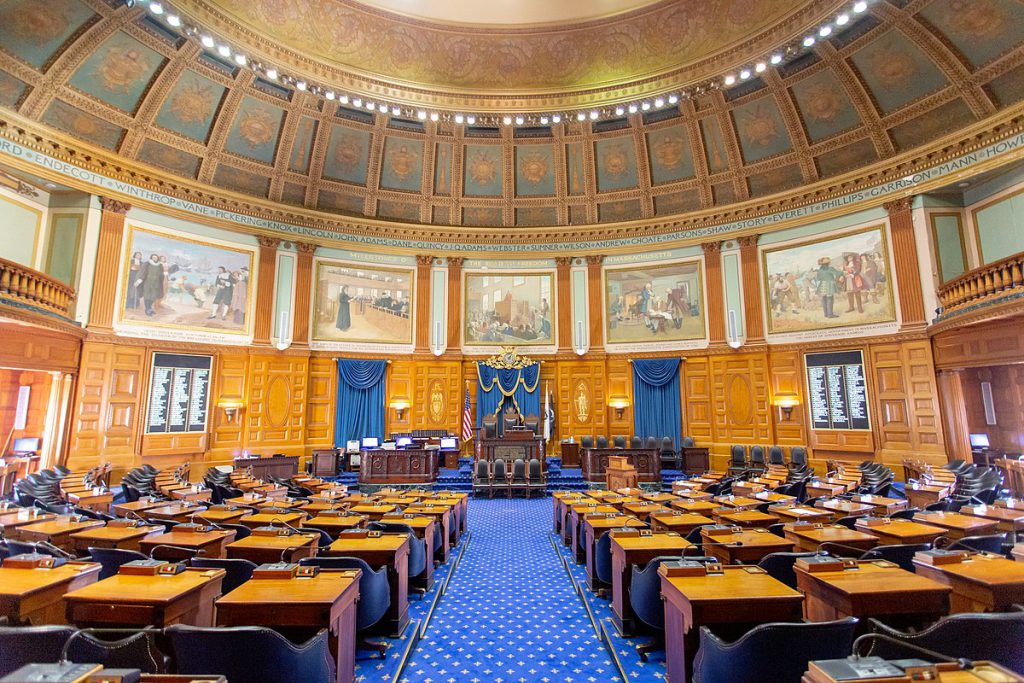
July 16, 2020 – The Massachusetts House of Representatives has just voted favorably in an informal session to pass a bill to protect girls from female genital mutilation/cutting (FGM/C). H.4606 – An Act Relative to the Penalties for the Crime of Female Genital Mutilation will now go to the Senate floor for a vote. Survivor Mariya Taher and activist Hanna Stern created a change.org petition to plead with the Massachusetts state legislature to protect young girls in Massachusetts from being cut by making illegal FGM/C. Taher has worked with the Women’s Bar Association of Massachusetts independently and on behalf of Sahiyo – United Against Female Genital Cutting, of which she is the U.S. Executive Director and co-founder. Sahiyo, along with Taher, Yusuf and Stern, would like to thank the Women’s Bar Association of Massachusetts, Speaker of the Massachusetts House of Representatives, Robert A. DeLeo, and bill sponsors State Representatives Jay Livingstone (D-8th Suffolk), Natalie Higgins (D-4th Worcester), and Brad Jones (R-20th Middlesex, House Minority Leader) for today’s passage of bill H4606 “An Act Relative to the Penalties for the crime of Female Genital Mutilation (FGM)” in Massachusetts. The FGM bill has not only bipartisan support, but also bicameral support, with over 100 Senate and House cosigners of the original bills (H3332, H1466). The bill has also been supported by almost 50 organizations, including The Women’s Bar Association of Massachusetts, U.S. End FGM/C Network, Sahiyo, UNICEF USA, Boston Mayor’s Office of Women’s Advancement, Office of the Child Advocate, Caucus of Women Legislators, American Academy of Pediatrics – Massachusetts Chapter, and American Congress of Obstetricians and Gynecologists (ACOG) – Massachusetts section, to name only a few. FGM/C is defined by the World Health Organization as removal of all or part of a girls’ healthy sex organs and surrounding tissue for non-medical reasons, often resulting in serious health consequences, the risk of death in childbirth, and lifelong trauma. According to the Centers for Disease Control, half a million women and girls living in the United States have been cut or are at risk of FGM/C. Over fourteen thousand such women and girls reside in Massachusetts, which ranks as 12th in the nation for at-risk populations. Last legislative session, the Joint Judiciary Committee heard unequivocal testimony from survivors that FGM/C happens in the U.S. and that girls born in Massachusetts are at risk. Thirty-eight states have already passed laws banning FGM/C including during the shutdown for the COVID19 pandemic, and with your immediate action by the Massachusetts Legislature and Governor Baker, Massachusetts can become number 39. We do not want our state to be a destination for FGM/C. In November 2019, a U.S. District court struck down the federal law making FGM/C illegal, finding that Congress exceeded its authority under the U.S. constitution, and that FGM/C is a violent crime that must be regulated by the states. Top Massachusetts law enforcement officials testified last September that existing state criminal laws would not cover FGM/C. The Department of Children and Families considers FGM/C a form of child abuse. Massachusetts must act to stop this practice. We respectfully urge all to support this legislation and take the necessary steps immediately to send it to the Senate floor for a vote before the end of the session on July 31st. Sahiyo is dedicated to empowering Asian communities to end female genital cutting (FGC) and create positive social change. By working towards an FGC-free world, we aim to recognize and emphasize the values of consent and a child’s/woman’s right over her own body. We aim to enable a culture in which female sexuality is not feared or suppressed but embraced as normal. The Women’s Bar Association of Massachusetts (WBA) has over 1500 members and was founded in Boston, Massachusetts in 1978 with a goal to achieve the full and equal participation of women in the legal profession and in a just society. It is one of the oldest and largest women’s bar associations in the country. photo by Lëa-Kim Châteauneuf
Understanding the Supreme Court’s latest judgement mentioning female genital cutting in India
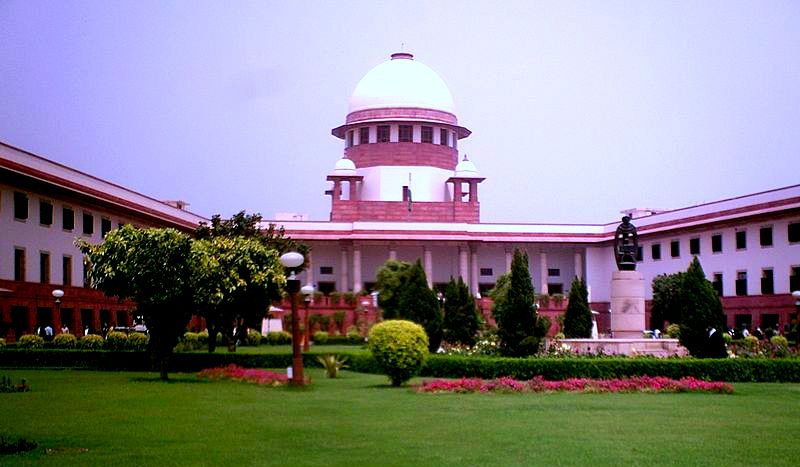
On November 14, after a year of silence on the female genital mutilation/ cutting (FGM/C) case pending before it, the Supreme Court of India mentioned that the case will be referred to a seven-judge Constitution bench. It is likely that the case will now be heard in conjunction with three other petitions dealing with women’s rights and freedom of religion: cases about Hindu women’s entry into the Sabarimala temple, Muslim women’s entry into mosques, and the entry of Parsi women married to non-Parsis into fire temples. Previously, in its September 2018 order, the Court had referred the FGC case to a five-judge Constitution bench. Since then, the case had been pending. On November 14, however, the Supreme Court brought up the FGC case while hearing a batch of review petitions in the case about Kerala’s Sabarimala temple, where women of menstruating age were traditionally not allowed to enter. The review petitions challenged the Court’s 2018 order which lifted the ban on women’s entry into the temple. In its November 14 judgement, a five-judge Supreme Court ruled that the debate on women’s entry into the temple overlapped with other cases about gender and religious rights that are pending before the Court, including women’s entry into mosques and fire temples and female genital mutilation/cutting among Dawoodi Bohras. It stated that a larger bench first needs to rule on the interpretation of the very principles governing the fundamental right to freedom of religion in the Constitution, before passing judgement on all of those cases from different communities. The implications of clubbing these various cases under one umbrella are yet to be seen, but the Court’s judgement does raise some concerns. Although these cases share the common theme of women’s rights within religion, the cultural ritual of cutting minor girls’ genitals is very different in substance from the rules restricting women’s entry into places of worship. It would be ideal if each of these issues are evaluated separately, on a case-by-case basis. Sahiyo believes that the matter of FGC needs to be treated with a little more urgency. Fourteen months have already passed since the Supreme Court first referred the FGC case to a Constitution bench last year. That bench was never formed, and now the Court’s decision to first adjudicate on larger questions of law is likely to stall hearings that may have been scheduled in the FGC case. Since the practice of FGC involves causing bodily harm to young girls, every delay puts more girls at risk of being cut. A quick recap of the FGC case In April 2017, Delhi-based lawyer Sunita Tiwari filed a Public Interest Litigation (PIL) in the Supreme Court seeking a ban on the practice of female genital cutting (also known as khatna, khafz, sunnath or female circumcision) in India. FGC is practiced among the Dawoodi Bohras and other Bohra sects in India, as well as among certain Sunni Muslims in the state of Kerala. Tiwari’s PIL, however, refers only to FGC among the Dawoodi Bohras. After Tiwari’s PIL was admitted in the Court, other intervention petitions were also filed in the case, some supporting a ban on the ancient practice, and one party (the Dawoodi Bohra Women’s Association for Religious Freedom) defending FGC on the grounds that it is an essential religious practice for the Bohras. The Dawoodi Bohra Women’s Association demanded that the matter of FGC be heard by a Constitution bench since it was about the Constitutional right to religious freedom. The case was heard by a three-judge bench which observed during a hearing in July 2018, that the “bodily integrity of women” cannot be violated. However, in September 2018, the bench referred the case to a five-judge Constitution bench. This meant that the practice of cutting a girl’s genitals — which the United Nations classifies as a human rights violation — would now be scrutinised through the lens of religious freedom. In light of the latest Supreme Court judgement, this will continue to be the case, except that now a larger, seven-judge bench will first examine the interpretation of Articles 25 and 26 of the Constitution pertaining to the right to religious freedom, before adjudicating on matters of FGC and women’s entry into places of worship. What the Court said: Majority and Minority judgements The Supreme Court’s judgement on November 14 was not unanimous. Three of the five judges on the bench delivered the majority judgement, in favour of referring the Sabarimala, FGC and other cases to a seven-judge Constitution bench. This 9-page majority judgement was authored by Chief Justice Ranjan Gogoi. The other two judges (Justices Nariman and Chandrachud) authored an elaborate 68-page dissent, insisting that there was no merit to the review petitions in the Sabarimala case and that the other cases of FGC, mosque entry or fire temple entry should not be clubbed together with the Sabarimala issue. The majority judgement stated the following: “The issues arising in the pending cases regarding entry of Muslim Women in Durgah/Mosque;…of Parsi Women married to a non-Parsi in the Agyari;…and including the practice of female genital mutilation in Dawoodi Bohra community…may be overlapping and covered by the judgment under review. The prospect of the issues arising in those cases being referred to larger bench cannot be ruled out…The decision of a larger bench would put at rest recurring issues touching upon the rights flowing from Articles 25 and 26 of the Constitution of India.” The majority judgement specified that the larger bench would essentially have to answer seven questions about the principles of Articles 25 and 26. These questions include these four points: What is the interplay between Constitutional freedom of religion and other rights granted in the Constitution, particularly the right to equality and prohibition of discrimination on the grounds of religion, sex, race, caste, etc? What exactly does “constitutional morality” mean? To what extent can the Court determine whether a practice is essential to a religion or a religious denomination? To what extent can the Court give judicial recognition to
Sahiyo talks about female genital cutting at 3rd Annual Intersections of Violence conference
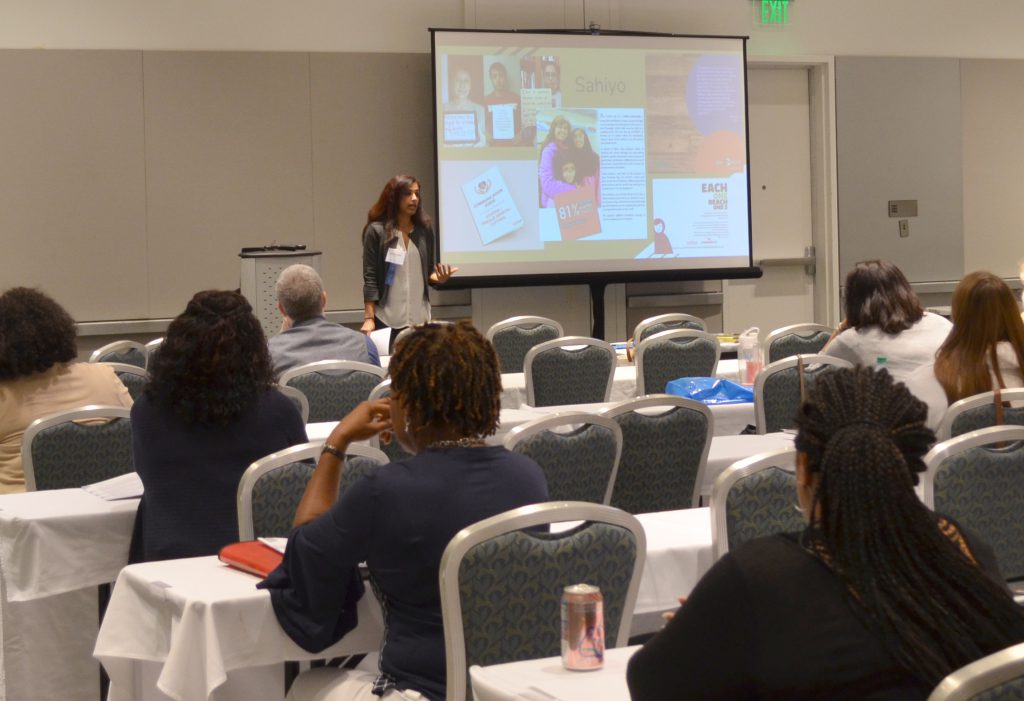
On July 16th, Sahiyo Cofounder and U.S. Executive Director, Mariya Taher was invited to attend the 3rd Annual Intersections of Violence: Domestic Violence, Sexual Assault, and Child Abuse Conference in Hampton, VA and host a break-out session on female genital cutting (FGC) in the United States. The conference is dedicated to enhancing the effectiveness of victims service professionals and brought together law enforcement, prosecutors, victim advocates, child advocates, and other allied professionals to highlight promising practices and emerging issues to effectively respond to domestic violence, sexual assault, andchild abuse in our communities. Mariya’s presentation, the only one of its kind at the conference, covered an overview of who is affected by FGC, interventions used to address FGC, and how to work/respond to survivors. Most attendees had little experience with FGC and so throughout the presentation, survivor stories, from Sahiyo Stories project were shown to participants to help contextualize that FGC was an issue within the U.S. affecting women of all different backgrounds, including religion, ethnicity, socio-economic status, education level, citizenship status, etc.
31 US States Now Have Laws Against Female Genital Cutting, But Government Will Not Appeal in the Federal Michigan Case

On April 10, the U.S. Department of Justice decided not to appeal the November 2018 judgement by a US District Court which ruled that the federal law banning Female Genital Cutting is unconstitutional. The District Court had stated that FGC is a “local criminal activity” to be handled at the state level and that Congress did not have the authority to enact the federal law under the commerce clause. While the Department of Justice cites such technicalities as the reason behind its decision not to appeal the District Court’s ruling, it has also urged Congress to address the flaws and problems with the federal law against FGC so that it can be strengthened. The District Court’s ruling in November came in the case of Dr. Jumana Nagarwala and others, who were charged with performing/aiding female genital cutting in Detroit, Michigan, on nine minor girls. In positive news, however, 31 out of 50 states in the USA now have laws banning Female Genital Cutting after Idaho, Arkansas, and Utah passed laws to that effect in the past few months. The Idaho legislature passed a bill outlawing FGC on March 20, and the law will be effective from July. Utah state legislators unanimously passed a bill against FGC a week earlier, on March 14. Meanwhile, the law in Arkansas, passed in February, not only criminalises FGC but also provides for introducing awareness programmes about FGC.18 states in the US have yet to pass their own laws banning genital cutting for girls and women, which is now vital since the District Court has ruled that FGC is a state-level crime. Meanwhile, in India, a group of grassroots Muslim women’s organisations in India released a manifesto on March 28 for political parties to take up ahead of the 2019 national Parliamentary election in April and May. The manifesto includes the demand for a special law to ban female genital cutting in India. The Indian Supreme Court is currently hearing a set of petitions demanding a law against FGC, as well as a counter-petition defending FGC on the grounds of the constitutionally-guaranteed right to religious freedom. The liberal Muslim women’s groups that released their “women’s manifesto” hope that India’s leading political parties will commit to ending FGC in their own official election manifestos.
Female Genital Mutilation: A Human Rights Issue?
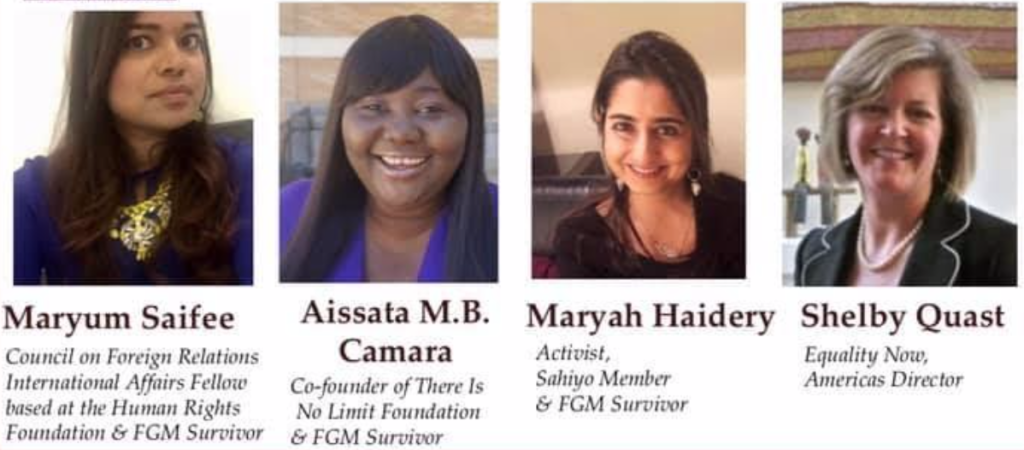
By Maryah Haidery Country of Residence: United States Last month, the Columbia University South Asian Feminisms Alliance organized a panel discussion in New York City to discuss female genital mutilation (FGM) in the broader context of human rights. I was honored to represent Sahiyo at this panel alongside Maryum Saifee, an FGM survivor and career diplomat with the United States Foreign Service; Aissata Mounir Camara, Co-founder of the There Is No Limit Foundation; and Shelby Quast, Americas Director of Equality Now. The event was scheduled for a frigid Friday afternoon and I was only expecting a handful of people to attend. But when I finally made my way to the School of International and Public Affairs, I was pleasantly surprised to find the room was packed with students and reporters interested to hear what we had to say. The event began with a screening of three short videos highlighting Maryum’s, Aissata’s, and my personal history with FGM. After some brief introductions, we began a very impassioned hour-long discussion about our individual experiences as activists. Maryum began by stressing that it was important to view FGM as not just a cultural or medical issue but as a fundamental violation of human rights, including the right to live a life free from violence – especially gender-based violence. Shelby was particularly insightful about the legal implications of overturning the federal constitutional ban on FGM in the Detroit case and the subsequent appeals process. Aissata was passionate about informing the audience that FGM was “not just an African problem” but a growing problem here in the U.S., and one that affects all types of women regardless of ethnicity, age, religion and socio-economic status. Keenly aware that I was lacking the extensive background and experience of my fellow panelists, I nevertheless tried my best to represent Sahiyo by discussing some of my recent initiatives, as well as some of the issues inherent in this sort of work. In keeping with the theme of the event, I discussed the challenge of framing FGM as a human rights issue. Some people hesitate in calling FGM a violation of human rights because they view rights through the lens of cultural relativism. Cultural relativism is the idea that right and wrong is subjective and varies based on culture. According to this view, definitions of human rights based on “Western” ideas, such as the UN’s Universal Declaration of Human Rights, can only apply to people from “Western” cultures, and different standards should be used to judge the practices of people from “non-Western” cultures like Dawoodi Bohra Muslims. Unfortunately, many politicians who have this view feel that supporting a ban on FGM may appear culturally insensitive. I told the audience that although I felt that such views were understandable and often well-meaning, they were fundamentally flawed. This is because concepts such as “right and wrong” and “human rights” are not subjective but objective. They are based on the things that humans need in order to live and flourish. While it might be true that the human rights guaranteed in the UN’s Declaration of Rights are based on “Western” ideas, they are universal and meant to apply to all humans, not just the ones born in the West. So, if you adopt a culturally relativist position and contend that universal human rights don’t extend to certain Muslim women, then you are essentially arguing that you don’t think that certain Muslim women count as “human.” It’s not hard to see why this would be wrong. At the end of the discussion, we responded to several questions from the audience. It was heartening to see how engaged everyone was. Someone asked how important we thought changing the existing laws would be for ending FGM. I answered that while laws could be important in underscoring our nation’s commitment to protecting the rights of little girls, laws alone would probably not result in changing the culture. That is why engaging with people and educating them is also so important. Shelby emphasized that laws were helpful in bringing exposure to previously taboo practices. But she also warned that it was important to ensure that laws were implemented in ways that helped communities instead of targeting them. Several people were interested in finding out what they could do to help end the practice in their communities. Maryum urged audience members to educate themselves on the issue and pursue creative solutions. Camara agreed. “Knowledge is power,” she said. “Educate yourself. Break the silence. Find your talent and join in.” After the event, nearly everyone took home information on how they could support the various organizations represented, find upcoming Zero Day of Tolerance Activities, or sign a petition to ban FGM in Massachusetts. It was a day that seemed to exceed all expectations.
A response to the letter written by Tasneem Yunus Burhani, Mubaraka Tambawala, Farida Mustafa Hussain, Fatemah Hussain, and Shakera Bohra published in Detroit News

By Umme Kulsoom Arif In response to your letter published in The Detroit News, “Dawoodi Bohra Women of Detroit speak up,” I write to you as a woman who grew up in a part of the Dawoodi Bohra community, just like you. I am also a woman of faith and education, a woman who loves her country as well as her Dawoodi Bohra community, who balances religion and patriotism in a trying, divisive time. And just like you, I am frustrated and saddened by the propaganda and misinformation that has spread surrounding the case of Dr. Jumana Nagarwala because I too am a survivor. A survivor of a harmful practice that violated my human rights, robbed me of my personal integrity, and — in punishing me for my own femininity — left me permanently scarred, both mentally and physically: khaftz. You claim that khaftz “in no way can be defined as female genital mutilation,” but do you know what FGM even is? The World Health Organization defines FGM/C as “all procedures that involve partial or total removal of the external female genitalia, or other injury to the female genital organs for non-medical reasons.” So educate me, then — what is the medical reason for khaftz? Why must it be done? Why must a girl be lied to, held down, or drugged so that a blade can be taken to her genitals and a part of her clitoris sliced away? You call the procedure “harmless,” so I ask you — where does the harm begin in your minds? Where do you draw the line between the “ritual” you defend and the “more barbaric practices from around the world” you claim to condemn? Is it not harmful to deny your daughter the right to her own bodily autonomy? Is it not harmful to violate her right to be free of torture and degrading treatment and to teach her that her body is “wrong” and must be surgically altered based on the words of religious men? The Quran does not ask this of us, so I ask you — who does? When countries around the world — including the United States — have signed human rights treaties both condemning and outlawing all forms of FGM, who demands that our daughters be subjected to a cutting or scraping without their consent and with no medical reasoning behind it? Though you claim to be patriotic Americans who follow all the laws of the land, you challenge a law meant to protect the most vulnerable members of the country’s population — its children. How can you in good conscience, claim that khaftz is “much more akin to a body piercing” when a child would never consider getting a piercing in such a sensitive area? Many of you are lucky to have suffered no consequences — physically or mentally — from khaftz, but your experiences are far from universal. You lie to yourselves when you purport to be representative of all the survivors of the khaftz. You lie to your daughters when you claim that there are no negative effects to the practice. You do a disservice to your community when you hide the truth of this harmful form of gender-based violence behind pleas for tolerance and claims of political persecution. By claiming that your experiences are universal and by defending this harmful practice, you have a direct hand in perpetuating violence against women. Is that the future of the Dawoodi Bohra community? A future where we must look our children in the eyes and tell them that they have no ownership of their bodies? A future where our daughters must be subjected to sexual trauma and placed at risk for future infection, for future complications in childbirth, or for chronic pain in a most sensitive area? The Dawoodi Bohra community cannot adhere to archaic violence in the name of tradition. The world around us has changed, and today we know more about our bodies and the consequences of our actions than we ever did. We must grow as people, as a community. We must come together to help, not harm. You may be educated women, but you blind yourself to the true nature of khaftz and its harm. You beg for tolerance and understanding but you do not try to understand the pain you inflict on your daughters when you have them cut. I beg you to take the time to listen to women the world over who have been harmed by khaftz. Read also “Other Views on FGM.”
Five things you need to know about the controversial court ruling on FGM/C in USA: Sahiyo explains
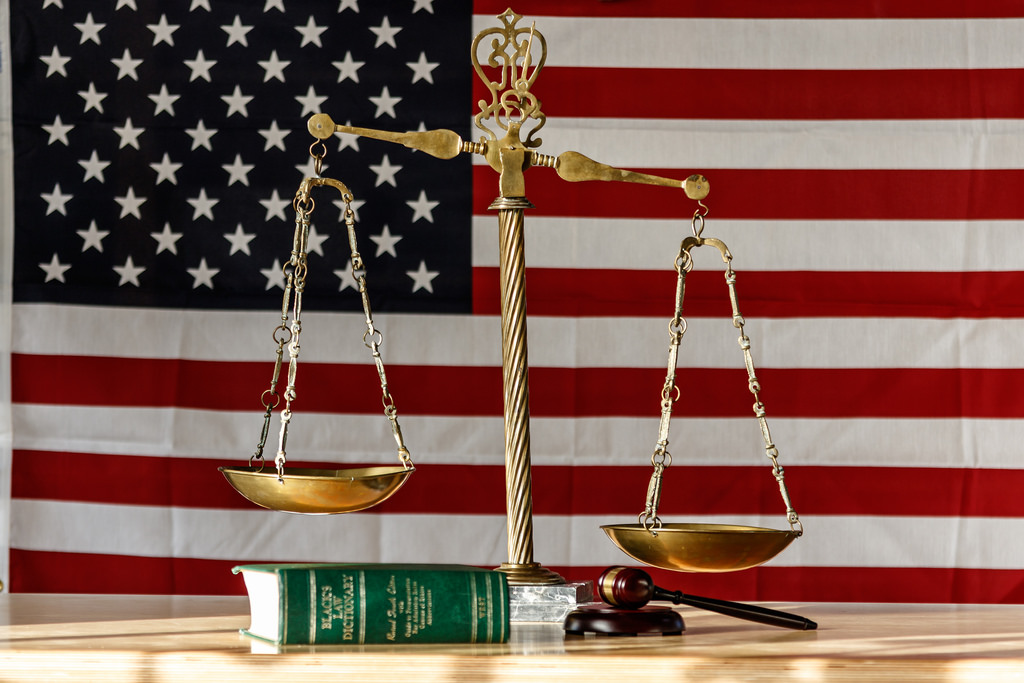
by Sahiyo On November 20, 2018, United States District Judge Bernard Friedman ruled that the US Federal Law banning Female Genital Cutting (FGC, also known as Female Genital Mutilation or FGM) is unconstitutional. With this ruling, the judge dismissed key charges of FGM against two Michigan doctors and six other people accused of practicing genital cutting on several minor girls. However, in the same ruling, Judge Friedman acknowledged that the practice of cutting a female’s genitalia is “despicable”. The ruling came as a shock to survivors of FGC and human rights activists advocating to end FGC, not just in the USA but all over the world. But there is more to this complex and controversial court ruling than the news headlines suggest. In order to better understand the ruling and its implications for communities that practice FGC, read Sahiyo’s comprehensive explainer below: What is the US District Judge’s ruling on Female Genital Cutting all about? In April 2017, the US federal government prosecuted Dr. Jumana Nagarwala, Dr. Fakhruddin Attar and his wife Farida Attar — all members of Michigan’s Farmington Hills Dawoodi Bohra mosque — for subjecting two minor girls from Minnesota to FGC. Subsequently, five other women from the Dawoodi Bohra community were prosecuted for performing FGC on at least nine girls in the Michigan area. This historic case was the first time that anyone had been charged under the US federal law prohibiting FGC — a law that had been introduced by the federal government back in 1996. To understand the US District Court’s ruling in this case on November 20, it is important to understand the federal nature of the US government and its criminal justice system. Under federalism, some laws can be passed by Congress — the federal or central government — and are applicable to all states in the country. Some other laws can only come under the jurisdiction of individual state governments, and cannot apply to the whole country. In his ruling in the FGC case, Judge Friedman of the federal-level district court stated that “as despicable as this practice may be”, FGC is technically a “local criminal activity”, and Congress (the federal government) does not have jurisdictional authority to regulate it. Even though the federal law against FGC has been in place since 1996, he stated that it is “unconstitutional.” Why is this ruling controversial? The district judge states that the crime of FGC should be regulated by individual states. But the US does not actually have laws against FGC in every single state. At the moment, only 27 out of 50 US states have a state law banning FGC. There is currently a state law in Michigan banning FGC, but the law only came into effect in 2017 after the federal case involving Dr Nagarwala and Dr Attar came to light. The doctors cannot be prosecuted retrospectively under this state law. Judge Friedman’s ruling declares the federal law against FGC to be unconstitutional based on a technicality. However, the ruling is controversial on at least two fronts. First, prosecutors and other human rights advocates argue that FGC cannot be considered just a local criminal activity, because it often involves transporting minors across state borders to get their genitals cut by doctors who are paid to perform the ritual. In this case, for instance, two minor girls were transported from Minnesota to Michigan to get FGC done by Dr Nagarwala. Therefore, the federal law banning FGC — which Congress had passed in 1996 under the “Commerce Clause” — should be applicable in this case. Judge Friedman’s ruling does not consider this aspect. Second, this ruling is insensitive to survivors of FGC and sends out a dangerous message to women from FGC-practicing communities: that their lives and bodies can be put at risk on the grounds of questionable technicalities. Does this ruling put more girls at risk of being cut? For the time being, yes: this ruling can put girls at risk of being but. The Centers for Disease Control and Prevention has estimated that 513,000 women and girls have experienced or are at risk of FGC in the United States. And this figure is an underestimation. Many women and girls at risk live in one of the 23 States which have not passed laws against FGC. Since the ruling puts the onus of regulating FGC only to individual states, many of these girls are at risk of being transported from states that have laws banning FGC to states that currently do not have laws banning FGC, so that they can be cut with impunity. Only 11 of the 27 States with anti-FGC laws have specific provisions banning the transportation of a child out of the State to perform FGC. Since the US is a strong country with a high degree of influence on global cultures, this ruling also ends up unintentionally condoning genital cutting for FGC-practicing communities all over the world. We are already seeing this in the global Dawoodi Bohra community, where supporters of Female Genital Cutting have taken to social media to celebrate their “victory” in the US FGC case, and to claim that they will continue cutting girls. Is this the end of the case, or can the ruling be appealed? This District Court ruling is not the end of the case. This is a lower court decision which can and almost certainly will be appealed by prosecutors from the US Government, and it is possible that over time, this case will be taken to the Supreme Court. Additionally, two charges remain against Dr Nagarwala, including conspiracy to travel with intent to engage in illicit sexual conduct, and obstruction of justice. Her trial is set to begin in April 2019. What is the way forward now, for those of us working to end FGC? Laws are an important deterrent against FGC, and help to reinforce the fact that cutting female genitals is a human rights violation. In light of Judge Friedman’s ruling, activists and communities in the
The Legal Side of Khatna or Female Genital Cutting

By Priya Ahluwalia Priya is a 22-year-old clinical psychology student at Tata Institute of Social Sciences – Mumbai. She is passionate about mental health, photography and writing. She is currently conducting research on the individual experience of khatna and its effects. Read her other articles in this series: Khatna Research in Mumbai. Female Genital Cutting or khatna or khafz, as it is also called in the Bohra community, involves cutting or removal of the external female genitalia. Khatna has no known health benefits, but does have well-documented complications, which range from severe pain, excessive bleeding, and scar tissue to frequent infections. The movement against khatna in India perhaps began in the early 1990s with Rehana Ghadially’s paper, “All for Izzat”, which attempted to identify the key reasons for why khatna was performed in India. However, the movement only gained momentum in 2011, when the first online petition was filed against it anonymously. The online campaign triggered a barrage of women coming forward with their own stories of trauma caused by khatna. It further fueled both online petitions as well as an onground movement. Within the Indian context of the Dawoodi Bohra community, the majority of the cases of khatna constitute Type 1, also referred to as clitoridectomy, which involves either partial or full removal of the clitoris, or the fold of skin known as the prepuce, covering it. Interestingly, there are many men and women who support khatna. From a psychological viewpoint, it may be rooted in the cognitive dissonance theory. Men and women of the Dawoodi Bohra community have been indoctrinated to believe that khatna is an essential religious obligation, and the will of God is not to be questioned. The online campaigns provide women in the Bohra community an alternative narrative, which may be in direct conflict with their existing beliefs. This conflict has created a lot of anxiety and conversations which have led to the movement gathering momentum, eventually catching the attention of the Indian government. The uphill legal battle saw the government oscillating between supporting and opposing the movement. In May of 2017, the Ministry of Women and Child Development declared full support for survivors, deeming the practice a criminal offence with prosecution possible under the guidelines of POCSO (2012). The ministry requested the community to voluntarily take action to stop it. If it failed, the government would seek to implement a law to end it. In December of 2017, the ministry withdrew from its position, citing lack of empirical evidence despite proof from Sahiyo’s landmark study, which revealed that 80% of Bohra women globally have undergone khatna. Although the rejection from the government was disheartening, the momentum of the movement has not faltered. Organizations such as Sahiyo and WeSpeakOut continue to provide crucial support for survivors to rally in solidarity. Several countries in Africa, as well as the United States and Australia, have made consistent and successful attempts to end female genital cutting. To understand how this has been possible, we must examine how the socio-economic structure of these countries has played an integral role in their success. Several of these countries may have high literacy rates, greater awareness of their rights and a more conducive environment for survivors to speak out. The Bohra community aspect is crucial to understanding the Indian government’s hesitancy to pass a law. Although India is a signatory to several of the United Nations and World Health Organization conventions which view khatna as a human rights violation, it comes under the purview of existing Indian legislation, such as article 319 and 320 of the IPC and POCSO. No separate law has been passed against FGC until now. Things looked hopeful when the PIL filed against FGM/C was to be heard by the five-judge bench in the India Supreme Court. The decision initially seemed to swing in favor of banning the practice, as the judges referred to it as a violation of the rights of the girl child. The judges questioned how the violation of the “bodily integrity” of the child could be an essential practice of a religion, asserting that right to religious freedom does not negate other fundamental rights of the individual. Despite overwhelming support, the judges later backtracked, deferring to a constitutional bench to decide on the matters of religious rights and freedom. It was the most crushing setback for the movement. Initially, I wondered what the hesitancy was in declaring khatna as a human rights violation. Later, I realized that the hesitancy was due to the political context and not the practice itself. Family and religion are the founding threads of our Indian community, and khatna is so intricately woven within these threads. Family and religion are our sources of identity, and since India is a collectivist society our ideas, beliefs in practices such as khatna are rooted in a collective experience, rather than an individual’s. Thus, attempting to end khatna risks unraveling the whole moral power structure of the country. Initially, it will begin with the Bohra community, but it may create a ripple effect across the country within other communities and religions. The moral thread of India is religion, and religion dictates our gender roles. If khatna is being questioned, we are unraveling this power structure by questioning the clergy’s teachings, and instead seeking the truth for ourselves by reading the religious scriptures whose access has unduly only been given to men for so long. Perhaps, with this newfound knowledge, our perception of the world will shift, leading to a destabilization of the existing structure and establishment of a new order with women in power. Change is just around the corner. Although the law is the first concrete step toward ending khatna, it is also a double-edged sword with unintended consequences. The law has the potential to push the practice further underground. The more discreetly cutting is done, the more difficult it would become to track it. Furthermore, the law would bring into question the perpetrators of the crime. Is it parents, midwives,
